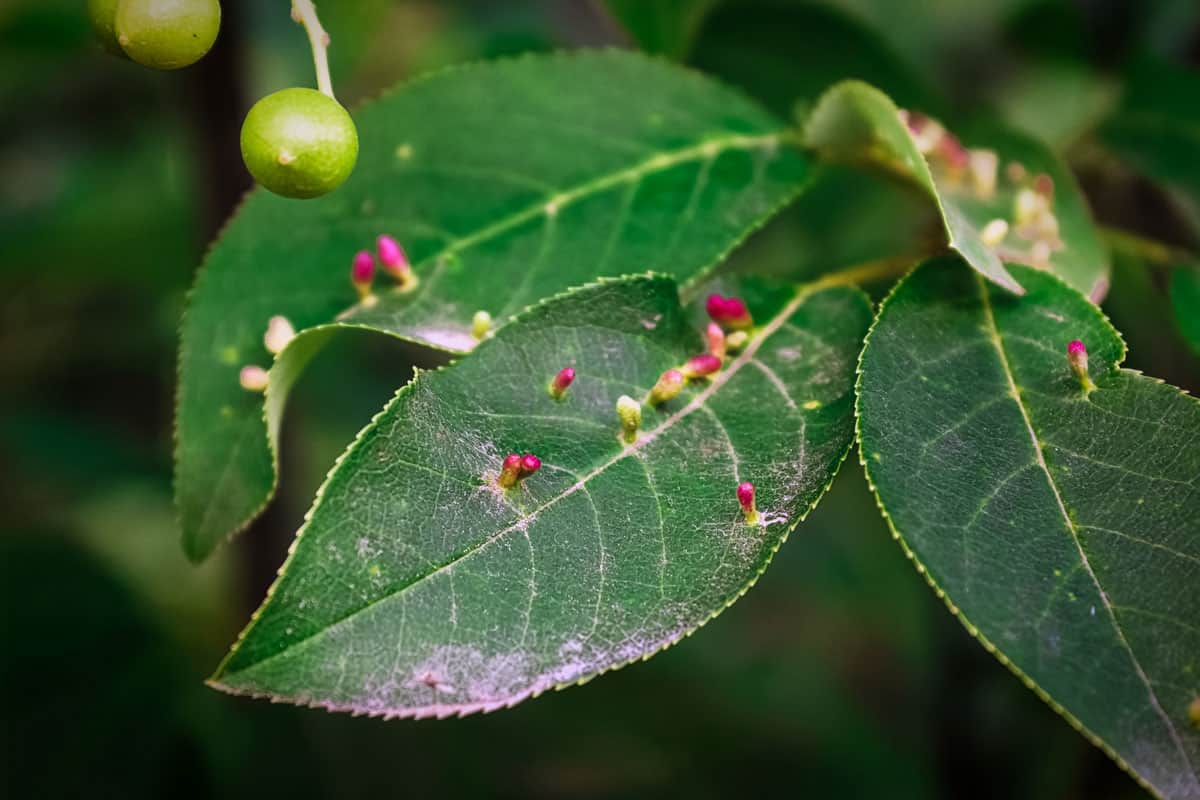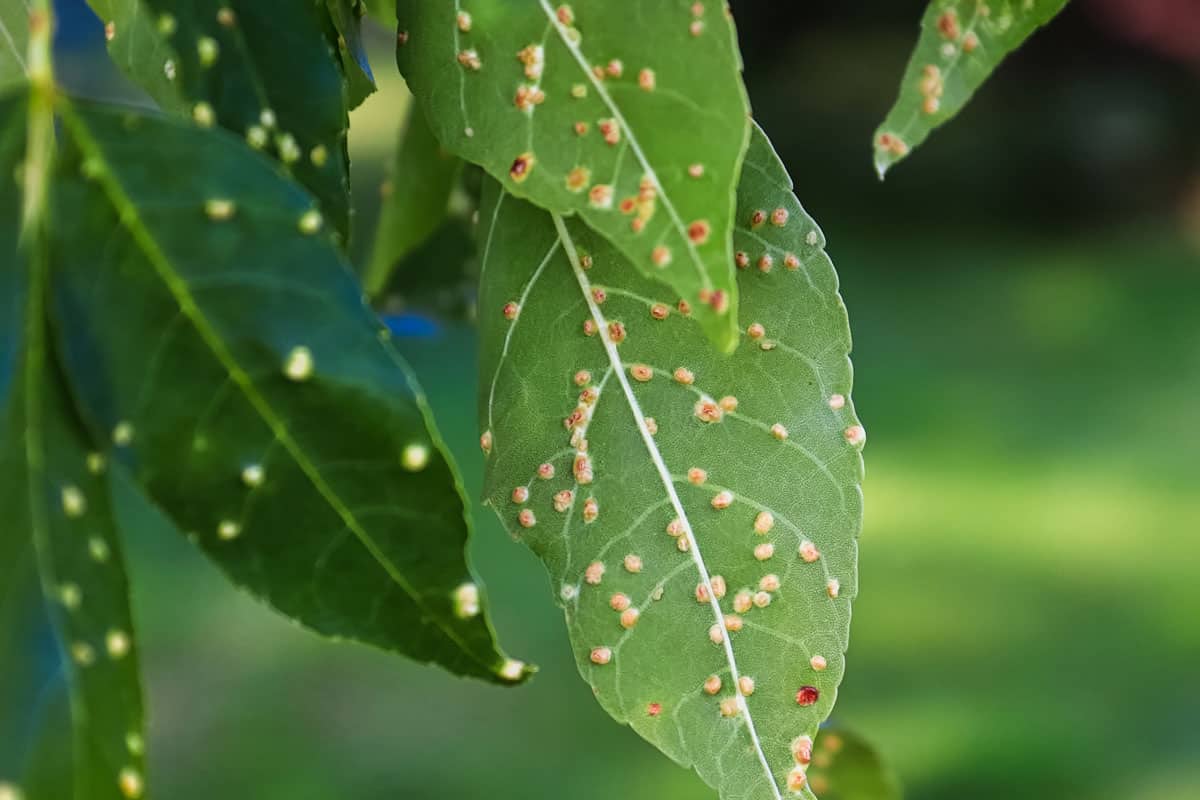Leaf miners are insects that live in and eat leaves. Though leaf miners do not majorly harm plants, they can make plants look less attractive. Don't know how to get rid of leaf miners? This post covers the 5 of the best systemic insecticides for leaf miners!
Five of the best systemic insecticides for leaf miners are:
- Bonide Systemic Granules
- Bioadvanced Insect, Disease, and Mite Control
- Mighty Mint Insect and Pest Control
- Compare-N-Save Insect Drench
- Natria Neem Oil Spray
There's much more you should know about leaf miners and systemic insecticides. For example, are leaf miners harmful if you ingest them? How long does it take for a systemic insecticide to work? We answer these questions and more in this post! Keep reading to learn more!

What Is A Systemic Insecticide?
A systemic insecticide is a pesticide that plants absorb through the roots and transport throughout their systems. When systemic insecticides are used, insects die over a while by ingesting the plant which contains the insecticide.

As established, systemic insecticides are an effective way of eliminating leaf miners. So, let's delve further into the five best systemic insecticides for leaf miners.
1. Bonide Systemic Granules
Bonide Systemic Granules protect plants from pests, including gnats, whiteflies, termites, and leaf miners. One of the advantages of this systemic insecticide is that it comes in a granular form.
This means it's pretty easy to apply and maybe a little less messy to use than liquid insecticides.
Another significant advantage of this product is that it contains 0.22% Imidacloprid. Imidacloprid is a chemical that disrupts the central nervous system in insects by hindering the transmission of stimuli.
It's known as one of the best solutions for leaf miners.
To apply these Bonide Systemic Granules, place the granules in the soil and water them. After watering the granules, the plant you're targeting will absorb the insecticide through its roots, protecting it from leaf miners and other pests.
Following application, Bonide Systemic Granules should last for about eight weeks. Once eight weeks pass, you should apply the product again to ensure that leaf miners and other pests continue to stay away from your plants.
It's important to know that you should not use Bonide Systemic Granules on fruits or vegetables. The product is only meant to be applied to flower beds, roses, and shrubs.
Follow this link to see it on Amazon.
2. Bioadvanced Insect, Disease, and Mite Control
Like Bonide Systemic Granules, Bioadvanced Insect, Disease, and Mite Control are versatile. In fact, it works as a 3-in-1 product, functioning as an insecticide, fungicide, and mite control.
The specific insects that these products target are leaf miners, Japanese beetles, caterpillars, and aphids.
However, unlike Bonide Systemic Granules, Bioadvanced 3-in-1 is a liquid. So, applying this liquid insecticide is slightly different from using a granular insecticide.
The biggest difference is that you'll need to mix this product with water before using it.
To properly apply Bioadvanced 3-in-1, first read the label to determine how much water you need to mix with the insecticide.
After determining the water to insecticide ratio, pour half of the water you need into the sprayer. Then, add all of the insecticides to the water.
Lastly, add the rest of the water to the sprayer and shake the mixture thoroughly. After shaking the mix, you spray the insecticide onto your plants.
Like Bonide, Bioadvanced 3-in-1 is designed for flowers, shrubs, and trees, so be sure not to use it on edibles.
3. Mighty Mint Insect and Pest Control
If you're looking for a natural insecticide, Mighty Mint Insect and Pest Control is a great option! It's made of all-natural ingredients, including peppermint oil, water, glycerin, polyglycerol oleate, and soap.
Mighty Mint's ingredients ensure that it's safe for people and animals, something harsh insecticides can't always guarantee.

Mighty Mint is great for leaf miners, but you can use it for several other insects, including cockroaches, spiders, and ants. Insects despise peppermint, as it contains terpene, alcohol, and menthol, all naturally toxic to insects.
There are a few ways you can use Mighty Mint. One way is to spray it directly onto the soil of your plants, allowing it to function as a systemic insecticide.
Another way is to use it as a non-systemic insecticide by spraying the plant's leaves. If you apply it using this method, the plant won't absorb it through the roots, but the bugs will come into contact with the spray through the leaves.
Lastly, you could use the spray as an insect repellant by spraying around the plants.
This method would probably work the best if you were targeting something besides a leaf miner; leaf miners' larvae live in and eat leaves, so spraying around the plant probably wouldn't solve much.
Check out this product on Amazon here.
4. Compare-N-Save Insect Drench
Compare-N-Save Insect Drench works well for protecting plants against birch leaf miners, Japanese beetles, aphids, emerald ash borers, and several other insects.
A significant advantage of this systemic insecticide is that you only have to apply it once a year. In addition, unlike Bonide and Bioadvanced, you can spray this product on fruit and nut trees.
Follow this link to see it on Amazon.
5. Natria Neem Oil Spray
Natria Neem Oil Spray is versatile, working as an insecticide and a fungicide.
It protects plants from various pests, including leaf miners, aphids, and white flies, and a variety of diseases, including black spots and scabs.
Additionally, neem oil is organic, so you can use this product on nuts, fruits, and vegetables.
To use this product as a systemic insecticide, apply it directly to your plant's soil. You should apply it every week or two as necessary. Along with Mighty Mint, Natria Neem Oil Spray is one of the best options for those who want a natural insecticide.
Check out this neem oil on Amazon here.
How Long Does It Take For Systemic Insecticides To Work?

The amount of time it takes systemic insecticides to work depends on several factors. For example, if you're applying systemic insecticide to a tree, the time it takes to work will depend on the tree's size and species.
Generally, a plant takes about a week or two to absorb the systemic insecticide and entirely transport it throughout its system. However, if the plant is on the larger side, it could take up to a month for the insecticide to full effect.
When Is The Best Time To Spray Systemic Insecticides?
You can apply many insecticides in the spring, early summer, or fall. For example, You can use Natria Neem Oil Spray during these three seasons.
However, some people prefer to spray systemic insecticides during the early spring, as this season usually allows people to eliminate insect nests while insect activity is still a bit low.
Regardless of which season you decide to spray in, you should always apply an insecticide on a mild day when no rain or wind is expected. This is so that the insecticide isn't washed away by rain or blown away by the wind.
Are Leaf Miner Larvae Harmful If Ingested?

You may be wondering if it's harmful to eat leaves that have been infested with leaf miner larvae. The answer is no!
Nothing terrible will happen if you ingest leaf miner larvae while eating spinach, lettuce, or any other vegetable. However, if you don't want to consume them purposefully, you should try to remove them from the leaves.
What Is The Life Cycle Of A Leaf Miner?
Leaf miners have four stages of life: egg, larva, pupa, and adult. Adult leaf miners lay eggs on the underside of leaves. Once these eggs hatch and become larvae, they begin eating the leaves.
Over time, the larvae develop into pupae. After the pupal stage ends, the leaf miner emerges as an adult and lays eggs, starting the cycle again.
To Wrap Up

In closing, 5 of the best systemic insecticides for leaf miners include Bonide Systemic Granules, Bioadvanced Insect, Disease, Mite Control, Mighty Mint Insect and Pest Control, Compare-N-Save Insect Drench, and Natria Neem Oil Spray.
These products protect against leaf miners and a variety of other pests.
Keep in mind that the length of time an insecticide takes to work depends on several factors. Also, remember never to apply systemic insecticides on rainy or windy days.
With these tips and our list of best insecticides, you should be ready to take on leaf miners!
Made it to the end? Check out these helpful related posts!





